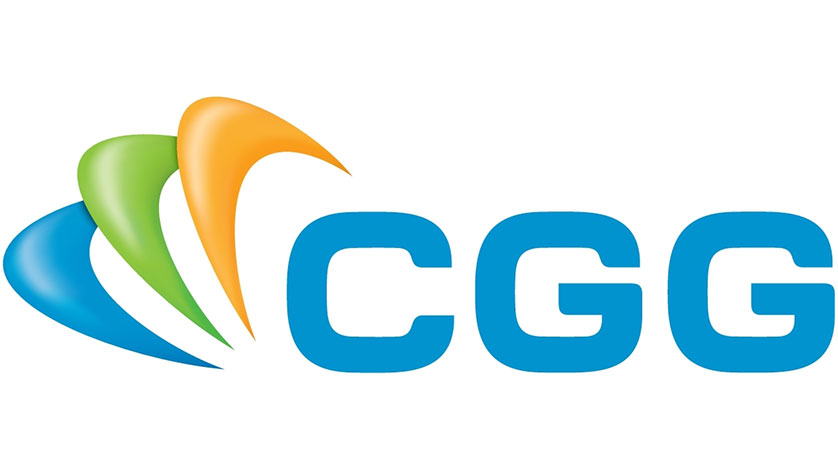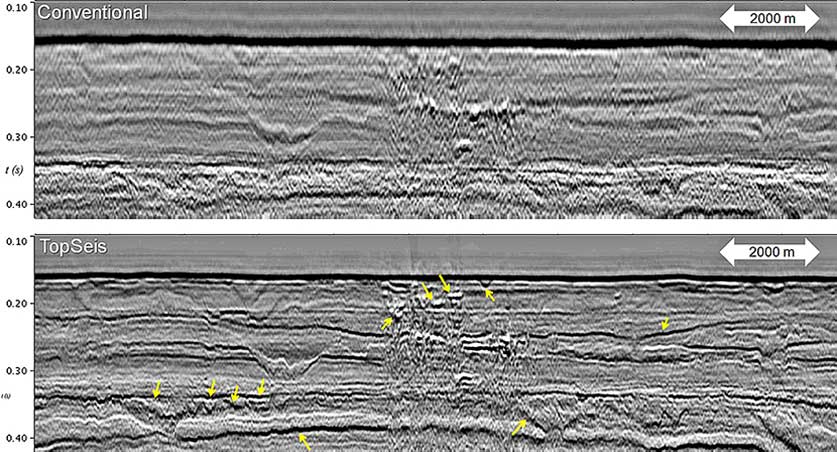CGG Adds to Growing Portfolio of Solutions

With its strong innovation culture, growing toolbox of advanced technology and broad range of geoscience expertise and experience, CGG relishes the opportunity to work with clients to design new solutions tailored to address specific challenges.
Its long track record of innovation includes an efficient, full-azimuth, long-offset solution, StagSeis, to image beneath the Gulf of Mexico’s complex tabular salt. For pre-salt imaging challenges offshore West Africa, B-WATS, a full-azimuth solution was designed to record more near offsets. With Statoil and RIL, CGG developed a system of co-operation to avoid time-sharing standby in the North Sea (presented in the technical sessions, Elboth et al., Th B3 05 at 10.30 and Elboth, Th P8 12 at 14.45). New advanced deblending algorithms from its Subsurface Imaging group provide greater flexibility of source numbers in acquisition geometry design without loss of fold or trace density (Cook et al., Tu B1 09 at 13.30 and To et al., Th B3 07 at 11.20). Multi-source solutions such as WidePass HD use this to double the subsurface footprint and deliver efficient acquisition for deepwater frontier exploration, by deploying an additional source vessel. This enables longer and wider effective spreads than any single vessel towing an ultra-wide spread can achieve.
To increase our flexibility, Sercel’s Sentinel MS has recently been added to CGG’s broadband toolbox, with one vessel now operating with a full spread of these multi-sensor streamers. This adds options for deghosting and complements BroadSeis and BroadSource, which still provide the broadest towed-streamer bandwidth with the best low-noise low frequencies.
 TopSeis versus conventional broadband acquisition. The conventional stack is particularly affected by the lack of near offsets and loses detail (image courtesy of CGG)
TopSeis versus conventional broadband acquisition. The conventional stack is particularly affected by the lack of near offsets and loses detail (image courtesy of CGG)
The latest example of CGG’s ability to develop solutions to specific challenges is TopSeis (Vinje et al., Tu A4 01 at 8.30). In collaboration with Lundin Norway, TopSeis has been designed for the challenges of imaging the shallow reservoirs of the Barents Sea, where main reservoir rocks are located at depths of 400-2200m. Shallow targets have always been poorly illuminated with lower fold than the deeper section since only near-offsets can be used in imaging. In the Barents there is a sharp velocity contrast at the reservoir, which limits the reflective energy to a narrow cone. The maximum offset at which this energy can be recorded is in the range of 800 – 2400 m and results in poor sampling using conventional acquisition.
TopSeis uses a split-spread, source-over-streamer configuration to improve the sampling of near offsets and record almost all the reflected energy. A source vessel is deployed a few kilometers behind the streamer vessel with a number of source arrays at wide separation. This delivers a split-spread, zero offsets and full-azimuth near-offset coverage with exceptionally high fold in a cost-effective way. In conventional towed-streamer acquisition only the inner streamers record near offsets, something exacerbated by use of wider spreads to increase efficiency, increasing holes in near-offset coverage. With TopSeis, wider source separations ensure more uniform shot-line spacing and therefore more continuous crossline near-offset distribution. Trace density is increased further by using small cable separations and dense shooting.
For practical reasons the streamers must be towed deep beneath the source vessel, and are curved to increase notch diversity for deghosting. Years of experience towing deep BroadSeis streamers have delivered a wealth of operational knowledge, as well as the tools and expertise to process such data. Another benefit is that near and zero offsets are recorded deep, away from the noisy sea surface and the tug and flow noise at the beginning of the streamer. This gives TopSeis exceptionally good S/N ratios, especially at low frequencies.
Extensive testing, including synthetic modeling and 2D and 3D pilot surveys, has demonstrated that TopSeis delivers a step-change improvement in S/N ratio and resolution, as seen in the figure, and can be deployed safely, without damaging in-sea equipment. TopSeis is a commercially-ready solution, with the first survey scheduled for Lundin in the Barents Sea this summer. Visit CGG at Happy Hour on booth no. 630 on Wednesday at 4pm and learn more about TopSeis and solutions for tough challenges.

